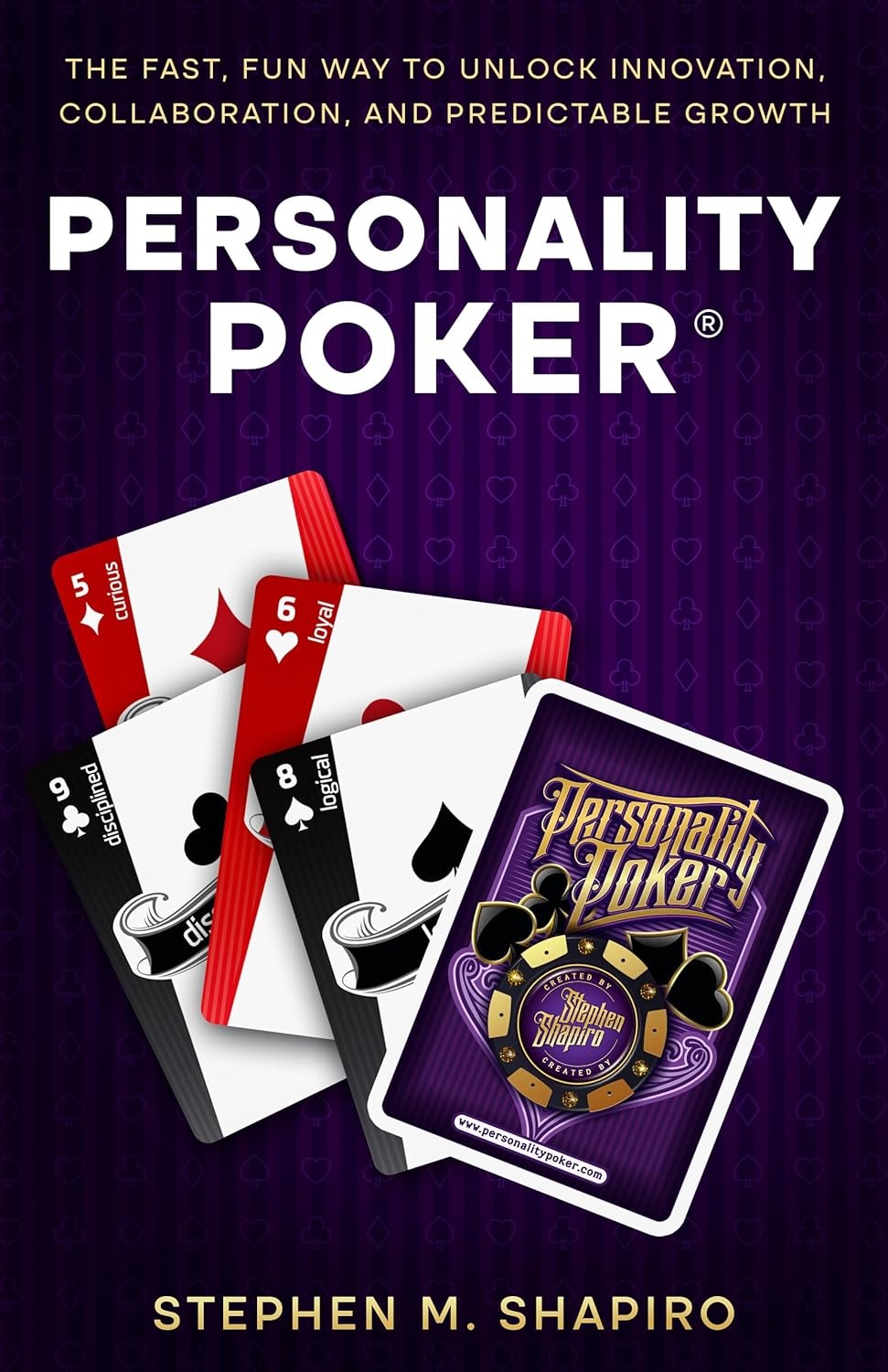
Personality Poker: The Fast, Fun Way to Unload Innovation, Collaboration, and Predictable Growth by Stephen M. Shapiro 4th Ed offers a fun game that any organization can use to help everyone determine their dominant and secondary personality types. It makes it easier to put people in positions that best suit their personality strengths, better drive the innovation process, and help connect people with complimentary personalities. Once you know your hand, you can compliment it when you hire new staff. To date, the game has been played by over 250,000 people and scientifically validated.
Introduction
- Personality Poker is a fast-paced game that helps you discover and understand your unique contributions to your team’s success, whether in driving innovation, strengthening collaboration, shaping culture, or achieving shared goals. Once everyone knows their strengths, the goal is to place the right person in the right position. Creativity is about generating new ideas. Innovation is about shifting culture to implement valuable new ideas.
- Stephen divides people by suits. The Spades dig and organize data. Diamonds are the idea people. Clubs plan and execute. Heats engage the hearts and minds of team members. Stephen has used this system with success with organizations of all sizes since he invented it in 1999.
Part I: Are You Gambling Your Company’s Future? 1. Pregame Warm-up
- Personality Poker can be used as a powerful conflict resolution tool. It focuses on what people like as opposed to what people are like. People often game personality tests by picking what they think is the “right” answer. People in a good mood solve more problems through flashes of insight and creativity. How others see you is an indicator of your behavior. Some personality traits such as inquisitiveness, are difficult to observe. First impressions can be “sticky.” Work roles often prescribe a particular behavior.
Part II: Playing Personality Poker 2. Before Getting Started
- It’s important to know the difference between your preferred style and your adapted style. Your adapted style is a learned behavior that you develop on the job due to the role you are put in. You can tell it’s an adapted style as it tends to sap you of energy whereas using your preferred style is more likely to energize you at work. If you are different at home, you are probably using an adapted style at work.
3. How to Play
- You first need a deck of the special cards that have style descriptive words on each regular playing card. The solitaire version involves going through the deck and placing cards in piles that are most like you, least like you, and others. The goal is to get nine cards in the like you and not like you piles. When you have that you should know which style you are most like, which style(s) are somewhat adjacent, and which are your opposite.
- You can also do a five pile version, which adds like me but I infrequently use it and like me but an adapted skill piles. In a five-card draw version each player gets five cards and players trade cards until they get a hand with cards most like them. There is also a 52 card pick up version.
4. Finding and Understanding Your Style
- The black cards are more rational and are more liked by people who rely on expertise and knowledge. The red cards are more relational in nature. These people like to connect ideas, experiences, and people. If your five cards don’t tell you what your primary style is feel free to get more cards. You are more likely to have two or three suits than only one or all four. Like the author, my primary style is diamonds and my secondary style is spades. The suit or suits you are missing are the styles you need to rely on from colleagues.
DrDougGreen.com If you like the summary, buy the book





